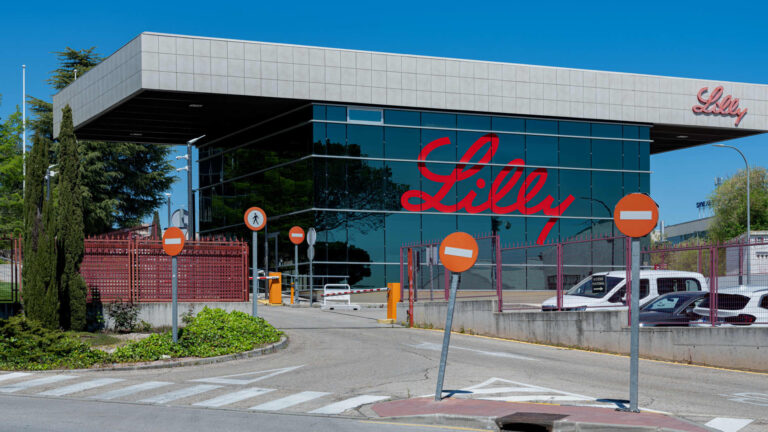Eli Lilly delivered strong second-quarter results on Thursday, but shares are plummeting because of disappointing data for a key late-stage trial. It’s forcing us to ask ourselves difficult questions about this once-loved stock. Revenue in the three months ended June 30 jumped 38% year over year to $15.56 billion, beating Wall Street expectations of $14.71 billion, according to LSEG. Adjusted earnings per share (EPS) surged 61% year over year to $6.31, ahead of the $5.46 consensus, LSEG data showed. Shares of Lilly tumbled more than 14% in afternoon trading to around $640 apiece. While we’re glad we booked profits in Lilly last week to protect against an earnings disappointment, Thursday’s performance is still tough to stomach. The stock, which is trading back to levels last seen in early 2024, is on pace for its third worst session since 1972. LLY 5Y mountain Eli Lilly’s stock performance over the past five years. Bottom line Investors are not fleeing the stock Thursday because of Lilly’s second-quarter performance. Those numbers actually look quite good. Sales and earnings came in a head of expectations on the back of healthy margin expansion. Its most important drugs on the market — Mounjaro for Type 2 diabetes and Zepbound for obesity — also beat expectations and continued their impressive growth. Thanks to the strong first-half performance, Lilly raised its full-year sales and profit outlook to levels above the Wall Street consensus, according to LSEG. Instead, shares are getting clobbered because Lilly’s experimental daily weight-loss pill orforglipron didn’t live up to the Street’s high bar in a hotly anticipated late-stage trial. While the drug met all the primary and secondary benchmarks that Lilly had set, investors were hoping for even better results. The drug is seen as being critical to expanding the market of GLP-1 obesity drugs, which is currently dominated by hard-to-manufacture weekly injectables that also have complicated requirements for distribution. Orals address those challenges. Plus, some patients who don’t like needles are also likely to prefer a daily pill, adding to the commercial potential of a drug like orforglipron. Oral GLP-1s could also be used to help people keep off weight they lost using an injectable. For the trial, the market was specifically looking at the weight loss of people who took the highest dose of orforglipron. And here, patients lost an average of 27.3 points, or 12.4% of their body weight. While that’s way better than the 0.9% reduction for the placebo group, Wall Street was looking for a result closer to 15%. In the stock market, what matters is how the results compare to estimates. Why was the “whisper number” around 15%? In a past clinical trial, rival Novo Nordisk’s injectable GLP-1 Wegovy helped patients lose about 15% of their body weight on average. It’s worth noting: The safety and tolerability profile of orforglipron was consistent with injectable GLP-1 therapies at 72 weeks….
Read More: We’re downgrading Lilly and asking ourselves tough questions after its



